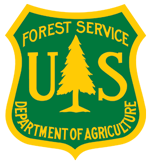News
Defenders Magazine Fall 2019
Florida manatee numbers are up but so are the challenges they face.
Gopher Tortoise Council Newsletter Summer 2019
In This Issue; Message From a Co-Chair; Announcements; Proposal Solicitations; Interview with a Herpetologist; In Appreciation of Dick Franz; Student Spotlight; Recent Research Citations; Education Corner; Georgia Joins in on Gopher Tortoise Day; Upland Snake Conservation Initiative Brochure.
Tennessee River Basin Network Newsletter November, 2019
Your Network News November 2019.
Wildlife Management Institute Outdoor News Bulletin November 2019
November 2019 Edition | Volume 73, Issue 11 | Published since 1946
Oak Woodlands & Forest Fire Consortium Newsletter October, 2019
In this issue: Shortleaf Pine Conference; Research Brief; Heads Up!; Hot Spots; Spotlight; Upcoming Events.
National Association of State Foresters Weekly Newsletter November 15, 2019
New Mexico signs Shared Stewardship agreement, NASF releases biennial statistics report...
Landfire Postcard November 2019
As 2019 winds down, LANDFIRE offers a sincere thank you to all who contributed to the program this year. LF is a cornerstone of a fully integrated national data information framework that is developing and improving vegetation and fuels products to support strategic fire and resource management planning and analysis.
Conservation Corridor November 2019 Newsletter
Read the Conservation Corridor November 2019 newsletter online.
American Fisheries Society News November 15, 2019
AFS News: Call for 2020 Symposia, Captive Propagation of Imperiled Species, Blob Disturbance
News from the South Atlantic Blueprint-November 2019 Newsletter
News from the South Atlantic Blueprint November 2019 Newsletter Southeast Blueprint 4.0 finalized by Rua Mordecai, Coordinator, Southeast and South Atlantic Conservation Blueprints.
A New Way to Support EBTJV-Shop Select RepYourWater Merchandise to Further our Brook Trout Conservation Efforts
Shop Select RepYourWater Merchandise to Further our Brook Trout Conservation Efforts-The Eastern Brook Trout Joint Venture (EBTJV) is excited to announce its collaboration with RepYourWater, Beyond the Pond, and the Atlantic Coastal Fish Habitat Partnership (ACFHP) to further support fish habitat conservation from whitewater to bluewater.
Southeast Partners in Amphibian and Reptile Conservation Newsletter September 2019
September Newsletter-September 18, 2019.
New bill may mean more ability to conserve at-risk wildlife species in Arkansas
WASHINGTON, DC – Conservation of our nation’s wildlife may see a dramatic boost thanks to a bill introduced in the U.S. House of Representatives July 12 by Representatives Jeff Fortenberry (R-NE) and Debbie Dingell (D-MI). The Recovering America’s Wildlife Act (H.R. 3742) was introduced with bipartisan support to devote additional money to wildlife conservation throughout the U.S.
National Fish and Wildlife Foundation Awards $1.3 Million in Grants to Conserve Habitat in the Southeast’s Cumberland Plateau
Seven projects will preserve forest and stream habitats, benefiting game species, forest-dependent birds, and fish and mussel species
Native grasses win performance tests
More than one study shows good gains and low costs from native forages.
Greg Judy Talks Electric Fencing and Gates for Sheep and Cattle
While Greg designed these fences to keep goats, sheep and guardian dogs in, they work for his cattle too. See what he’s using and consider how you’d adapt it to your operation.
Ag a perfect place to 'do science' (Editorial)
Using agriculture as a venue for science aligns perfectly with the “do science” mentality. The hands-on action-oriented learning in real-life conditions tricks young students into learning by stimulating their senses and curiosity. It exposes them to so many scientific realms that they often learn they like something they never knew about.
How the South Fights Fire with Fire, and What the West Can Learn
Most years Georgia intentionally burns around a million acres of forest. That’s about 30 times the size of California’s prescribed burns. Florida performs prescribed burns over twice that much land. That’s according to data from the national interagency fire center and compiled by the non-profit Climate Central.
Southeast Climate Adaptation Science Center May 2019 Newsletter
Welcome to the Southeast Climate Adaptation Science Center’s May 2019 Newsletter.
U.S. Fish and Wildlife denies Endangered Species Act protection for eastern hellbenders
Just as the N.C. Wildlife Resources Commission has called on the public to help locate and document sightings of the declining population of eastern hellbender salamanders to help in recovery efforts, the U.S. Fish and Wildlife Service decided not to list the salamander as an endangered species.






















